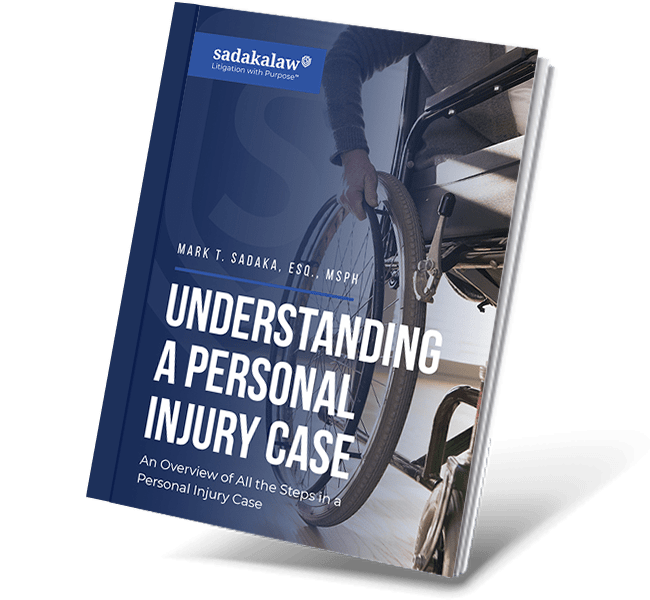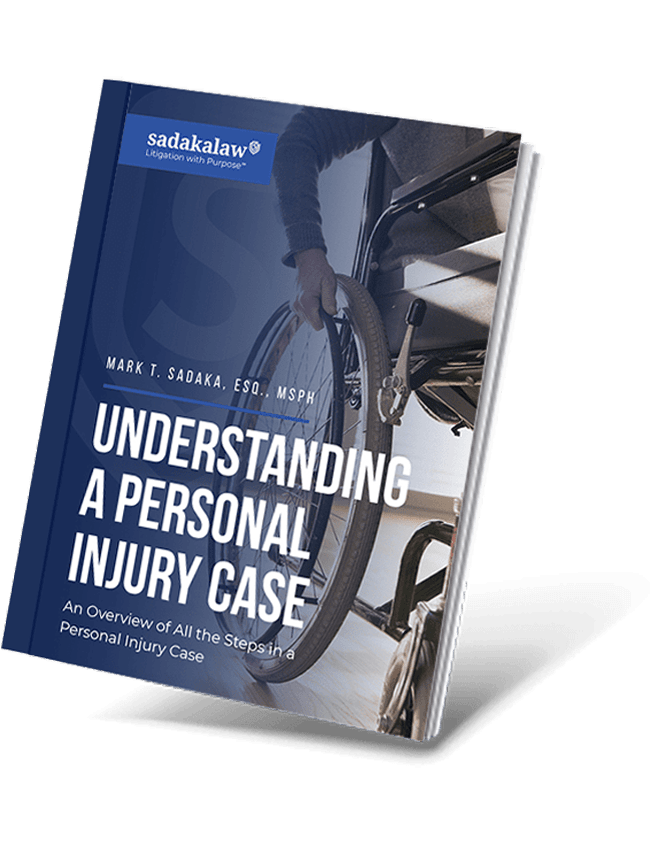Here’s a common scenario on our New Jersey roads: it’s rush hour, and everyone’s trying to head home as quickly as possible. Suddenly, a car or truck slams into the back of another vehicle. The driver suffers back injuries so serious that they can no longer work.
If you can empathize with the victim in this story, you’re probably here because you need advice about a back injury from a car accident. Below, learn about common car accident back injuries, plus what to do if you want compensation for a car crash.
What Are the Common Back Injuries From a Car Accident?
Back injuries from a car accident can range from fairly minor to extremely serious. We’ll provide you with a primer on several common car accident back injuries.
Whiplash
Whiplash develops when one’s neck snaps back and forth quickly, like a whip (hence the name). It commonly occurs in rear-end collisions. Many people with whiplash recover just fine, but some have long-lasting neck and back pain.
Whiplash symptoms include:
- Pain that worsens with neck movement
- Neck stiffness
- Loss of range of motion in the neck
- Numbness or tingling in the arms
- Tenderness or pain in the arms, shoulders, or upper back
- Dizziness
- Tiredness
Rarer symptoms include:
- Ringing in the ears (tinnitus)
- Trouble sleeping
- Blurred vision
- Memory problems
Lumbar Injuries
Lumbar injuries happen when ligaments (bands of tissue that connect bones) tear or stretch in an unusual way. Lumbar strains occur when muscles and tendons are affected. Symptoms can include pain and spasms in your lower back.
To diagnose lumbar injuries, your doctor may ask you to have an X-ray, CT scan, or MRI. They may also want to perform a radionuclide bone scan or an electromyogram (EMG) to test muscle and nerve function.
Sprains
Lumbar sprains happen when the ligaments in your back are injured. Symptoms are similar to those discussed above for lumbar injuries.
Fractures

Back fractures can happen in your:
- Lumbar (lower) spine
- Thoracic (middle) spine
- Cervical (upper) spine
- Sacrum and coccyx (base of the spine)
There are three main types of fracture patterns: flexion, rotation, and extension. Regardless of the type of fracture, all can cause moderate to severe back pain.
Many fractures heal well with physical therapy and bracing for six to 12 weeks. Others require surgical intervention.
Spinal Cord Injuries
Spinal cord injuries are incredibly common in car accidents. Of those, some of the more notable include spinal cord injuries such as spinal stenosis, incomplete spinal cord injury (SCI), and complete SCI.
Spinal Stenosis
Spinal stenosis can develop when the spaces inside the backbone are too small. The condition puts pressure on spinal nerves and typically affects the lower back and neck.
Arthritis is the largest cause of spinal stenosis, and the majority of people with this condition are over the age 50. Car accidents can cause spinal stenosis to develop, too — and if you already have the condition, an accident can make it worse.
Not everyone with spinal stenosis has symptoms. Those who do might experience:
- Tingling, weakness, or pain in the arms, hands, feet, and legs
- Pain in the legs, thighs, and buttocks that worsens when standing
- Numbness or reduced sensation of touch
- Muscle weakness and cramping
- Bladder or bowel problems
Incomplete and Complete SCI
Spinal cord injuries happen when the bony protection surrounding your spinal cord is damaged. If you have incomplete SCI, you still have some sensation below the injury site, and your spinal cord is still able to convey messages to and from the brain. With complete SCI, on the other hand, you’re unable to feel anything below the site of the injury.
There are several types of SCIs, each with its own set of symptoms. These can include weakness or paralysis of the legs, loss of sensation, and loss of bladder, bowel, and sexual function.
Soft Tissue Injuries
Soft tissue injuries affect the tendons, muscles, ligaments, and nerves in your back. Whiplash is a type of soft tissue injury, as are sprains and strains.
Soft tissue injuries usually heal fully in a few weeks. Follow the RICE protocol (rest, ice, compression, and elevation) to expedite healing.
How Long Will My Back Hurt After a Car Accident?

It’s impossible to say exactly how long your back will hurt after a car accident. Minor car accident spinal injuries may hurt for a couple of weeks, but if your injury is more serious, you could have pain for months. Some people have chronic pain that only goes away with surgery.
How Do You Know If Your Back Injury Is Serious?
If your back pain is severe and you’re having trouble walking, these are good signs that your back injury needs immediate medical attention. Serious back injuries can also cause symptoms that you might not expect, such as:
- Trouble breathing
- Muscle spasms
- Tingling in your feet, legs, hands, or arms
- Fever
- Blood in your urine
- Trouble urinating or defecating
If you have any of these symptoms, see your doctor as soon as you can.
Even if you don’t have symptoms, you should see a doctor after a car accident anyway. Some back injuries don’t cause pain or other symptoms until weeks or months after a crash.
What To Do If Your Back Is Injured From a Car Accident
If you’ve hurt your back in a car wreck and want compensation, here’s what to do.
Take Pictures and Gather Evidence
Collecting rock-solid evidence is critical if you want to win your case. To begin, take pictures of the accident scene (if you’re able). Photos of your car, the other driver’s vehicle, and debris on the road are all helpful.
Don’t forget to talk to witnesses at the scene, if there are any. There’s a chance that they saw something that may validate the legitimacy of your claim.
If you had a truck or bus accident, you’ll also need to collect black box data. Nearly all commercial vehicles have black boxes, which record the driver’s speed, stops made, and routes taken.
See a Doctor

As mentioned above, you mustn’t forgo medical treatment after a car crash. In addition to potentially uncovering hidden injuries, your doctor can make a statement about how those injuries happened, which can help with proving fault.
Make an Insurance Claim
Next, you’ll need to make a list of your damages and send it to the insurance company. An adjuster will then either pay what you’re asking or, more likely, send a reduced offer. At this point, you can accept the offer or negotiate for more.
We rarely advise clients to take the first offer, as it’s usually too low to cover all of their damages. By negotiating, you could increase your settlement by thousands.
Be careful of what you say when talking to the adjuster, too. Don’t apologize for the crash, and don’t say anything that they can misconstrue as guilt.
Hire a Car Accident Back Injury Lawyer
Negotiating with the insurance company is very stressful, and that’s the last thing you need when you have a back injury from a car accident. It’s better to let an attorney handle negotiations for you. They know all the tricks when it comes to winning a fair settlement for you.
They can also represent you should the case go to trial. The majority of cases settle out of court, but it never hurts to be prepared.
Finding an Attorney After a Car Accident
Finding a good lawyer for back trauma due to a car crash can be challenging. You’re in pain, and you’re preoccupied with shuffling from one doctor’s appointment to the next. Maybe you’re also worried about how to pay rent if your automobile accident back pain is so bad that you can’t work.
To find a reputable lawyer:
- Ask friends, family, and even co-workers for suggestions. The odds are good that someone in your circle knows a dependable attorney.
- Check out client testimonials. This will tell you what it’s like to work with an attorney and how previous cases have gone.
- Look for lawyers that work on contingency. This means that you don’t owe anything unless the lawyer wins your case.
- Find a firm that offers free initial consultations. During the consultation, you can decide whether the attorney is a good fit for you and your case.
- Don’t be afraid to ask questions. Great lawyers should have no trouble explaining things to you, and they shouldn’t use confusing legalese to do so. If the lawyer seems patient, caring, and empathetic, they’re probably a winner.
Let your search for an attorney end here with Sadaka Law. We’ve won six-figure settlements for accident victims; rest assured that we’ll fight tooth and nail for fair compensation.
If You’re Having Back Pain From an Auto Collision, Call Sadaka Law
Have you developed a back injury from a car accident? Let Sadaka Law guide you on the path to recovering damages. We can also discuss common injuries and damages associated with different types of accidents.
Call (800) 810-3457 for a consultation regarding your vehicle collision back injury now.


